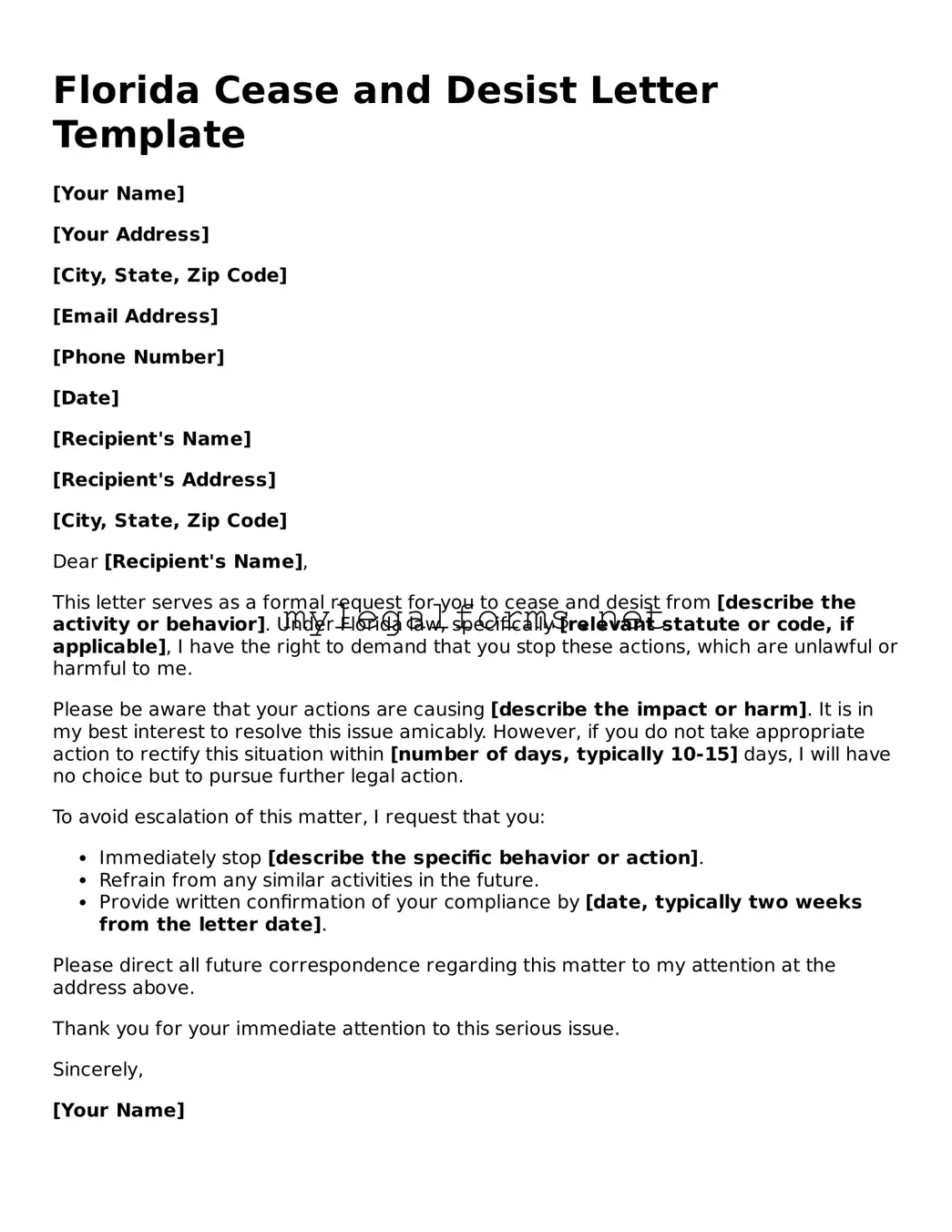Florida Cease and Desist Letter Template
[Your Name]
[Your Address]
[City, State, Zip Code]
[Email Address]
[Phone Number]
[Date]
[Recipient's Name]
[Recipient's Address]
[City, State, Zip Code]
Dear [Recipient's Name],
This letter serves as a formal request for you to cease and desist from [describe the activity or behavior]. Under Florida law, specifically [relevant statute or code, if applicable], I have the right to demand that you stop these actions, which are unlawful or harmful to me.
Please be aware that your actions are causing [describe the impact or harm]. It is in my best interest to resolve this issue amicably. However, if you do not take appropriate action to rectify this situation within [number of days, typically 10-15] days, I will have no choice but to pursue further legal action.
To avoid escalation of this matter, I request that you:
- Immediately stop [describe the specific behavior or action].
- Refrain from any similar activities in the future.
- Provide written confirmation of your compliance by [date, typically two weeks from the letter date].
Please direct all future correspondence regarding this matter to my attention at the address above.
Thank you for your immediate attention to this serious issue.
Sincerely,
[Your Name]
